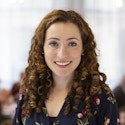Simons Investigators
- Email:
[email protected]
Simons Investigators are outstanding theoretical scientists who receive a stable base of research support from the foundation, enabling them to undertake the long-term study of fundamental questions.
The Investigator program has been discontinued.
Simons Investigators in Mathematics, Physics, Astrophysics and Computer Science
The intent of the Simons Investigators in Mathematics, Physics, Astrophysics and Computer Science programs is to support outstanding theoretical scientists in their most productive years, when they are establishing creative new research directions, providing leadership to the field and effectively mentoring junior scientists. A Simons Investigator is appointed for an initial period of five years. Renewal for an additional five years is contingent upon the evaluation of scientific impact of the Investigator.
Simons Investigators in Mathematical Modeling of Living Systems (MMLS)
This program aims to help the research careers of outstanding scientists working on mathematical and theoretical approaches to topics in the life sciences. A Simons Investigator in MMLS is appointed for five years.
Math+X Investigators
This program encourages novel collaborations between mathematics and other fields in science or engineering by providing funds to professors to establish programs at the interface between mathematics and other fields of science or engineering. A Math+X Investigator is appointed for an initial period of five years. Renewal for an additional five years is contingent upon the evaluation of scientific impact of the Investigator.
- Email:
[email protected]
- Email:
[email protected]
2018
André Arroja Neves, Ph.D.
University of Chicago
André Neves is a leading figure in geometric analysis with important contributions ranging from the Yamabe problem to geometric flows. Jointly with Fernando Marques, he transformed the field by introducing new ideas and techniques that led to the solution of several open problems which were previously out of reach. Together or with coauthors, they solved the Willmore conjecture, the Freedman-He-Wang conjecture in knot theory and Yau’s conjecture on the existence of minimal surfaces in the generic case.

Sylvia Serfaty, Ph.D.
New York University
Sylvia Serfaty works on understanding the behavior of physical systems via the tools of mathematical analysis, partial differential equations and probability. A large part of her work has focused on the Ginzburg-Landau model of superconductivity, tackling and largely solving the problem of why and when vortices form the so-called Abrikosov triangular lattices. She has recently turned her attention to the statistical mechanics and dynamics of Coulomb-type systems and other many-particle systems with long-range interactions.
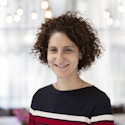
Akshay Venkatesh, Ph.D.
Stanford University
Akshay Venkatesh’s research is in number theory and related fields. A major focus of his recent work has been the topology of locally symmetric spaces, in particular on new phenomena that occur when one leaves the setting of Shimura varieties. In that context, he has postulated, and gathered evidence for, a deep relationship between this topology and the motivic cohomology of certain algebraic varieties. Venkatesh resigned his Investigatorship in 2019 to take a position at the IAS.

Liang Fu, Ph.D.
Massachusetts Institute of Technology
Liang Fu contributed to the prediction of three-dimensional topological insulators and their material realizations. Since then, he has extensively developed topological band theory for crystalline insulators, semimetals and superconductors. He and his collaborators introduced a leading platform for creating Majorana quasiparticles and proposed realistic schemes for Majorana-based quantum computing. He also helped develop the concept of fracton topological order. Some of Fu’s recent interests include non-Hermitian quantum mechanics, topological properties of quantum particles and dynamics, nonlinear transport and optical properties in solids, and potential applications of topological quantum materials.

Kenneth Intriligator, Ph.D.
University of California, San Diego
Kenneth Intriligator’s research goal is to contribute to a deeper understanding of quantum field theory, which is the underlying framework of nature. He explores the varied phenomena and phases of quantum fields by developing symmetry-based methods to find new exact results, interconnections and dualities among theories.

Xiao-Liang Qi, Ph.D.
Stanford University
Xiao-Liang Qi’s recent work focuses on the role of quantum entanglement in quantum many-body physics and quantum gravity. He helped relate holographic duality with tensor network states, a geometrical representation of quantum many-body states. He has also worked on topological states of matter. His work pointed out the relation between topological insulators in three spatial dimensions and axion electrodynamics.

Shinsei Ryu, Ph.D.
Princeton University
Shinsei Ryu’s research highlights coherence, entanglement and topology in condensed matter — unique features of quantum systems which can give rise to phenomena with no classical counterparts. He has worked on the classification of topological phases of matter with symmetries and the characterization of strongly interacting many-body systems by quantum entanglement using the idea of holographic duality.
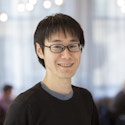
David Tong, Ph.D.
University of Cambridge
David Tong works on quantum field theory. A recurrent theme is the interplay between dualities, solitons and string theory. He is known for his contributions to inflation, supersymmetric gauge theories, holography and condensed matter. He is also known for his lecture notes on various topics in theoretical physics.

Yanbei Chen, Ph.D.
California Institute of Technology
Yanbei Chen made major contributions to understanding the noise of laser-interferometer gravitational-wave detectors that arise from quantum fluctuations of light and matter. He proposed conceptual interferometer designs that can achieve better sensitivity — also formulating a vision for experimentally testing quantum mechanics and quantum measurement theory on macroscopic objects. Chen made important contributions to gravitational-wave data-analysis strategies and works on using gravitational-wave observations to test the predictions of general relativity in strong gravity and to study the structures of black holes.
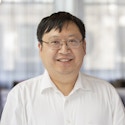
Ue-Li Pen, Ph.D.
University of Toronto
Ue-Li Pen is known for developing innovative tools to create new fields of research. His pioneering work on 21 cm intensity mapping opens a new window for the precision study of dark energy and neutrinos. Recently, his use of natural plasma in our galaxy as a giant telescope spawned the field of scintillometry, enabling new glimpses into enigmatic pulsars and the unsolved fast radio bursts. The orders of magnitude improved precision may improve our understanding of space-time, including gravitational waves.

Constantinos Daskalakis, Ph.D.
Massachusetts Institute of Technology
Constantinos Daskalakis works on computation theory and its interface with game theory, economics, probability theory, statistics and machine learning. His work has resolved long-standing open problems about the computational complexity of the Nash equilibrium, the mathematical structure and computational complexity of multi-item auctions, and the behavior of machine-learning methods such as the expectation-maximization algorithm. He has obtained computationally and statistically efficient methods for statistical hypothesis testing and learning in high-dimensional settings, as well as results characterizing the structure and concentration properties of high-dimensional distributions.
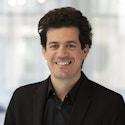
Ran Raz, Ph.D.
Princeton University
Ran Raz’s main research area is computational complexity theory, with a focus on proving lower bounds for computational models. He works on Boolean and algebraic circuit complexity, communication complexity, probabilistically checkable proofs and interactive proof systems. In the last years, he studied relations between communication complexity and information complexity of communication protocols and worked on unconditional lower bounds on the number of samples needed for learning, under memory constraints.
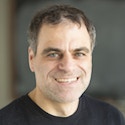
Claudia Clopath, Ph.D.
Imperial College London
Claudia Clopath’s work contributed to our understanding of learning in the brain. She developed mathematical models of learning to link the plasticity observed experimentally at the neural level to the function at the network and behavioral level.
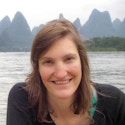
Lucy Colwell, Ph.D.
University of Cambridge
Lucy Colwell has demonstrated that the three-dimensional structure of proteins can be determined from large sequence alignments. Her current research develops methods for relating phenotype to genotype, using large data sets from high throughput biological experiments, focusing mainly on proteins, small molecules and nucleic acids.
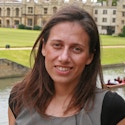
Eleni Katifori, Ph.D.
University of Pennsylvania
Eleni Katifori is a recipient of a Burroughs Wellcome Career Awards at the Scientific Interface Award and an National Science Foundation Career Award. Her research interests are primarily theoretical and span broad areas from soft matter physics with a focus on biologically inspired physics, thin shell elasticity and biological transport networks.
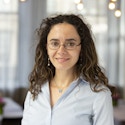
Daniela Witten, Ph.D.
University of Washington
Daniela Witten is a leader in the field of statistical machine learning. Her work focuses on the development of supervised and unsupervised learning methods for making sense of large and messy data sets arising from genomics, neuroscience and other fields. She has developed new frameworks for performing clustering, graphical modeling and matrix decompositions in the high-dimensional setting.
